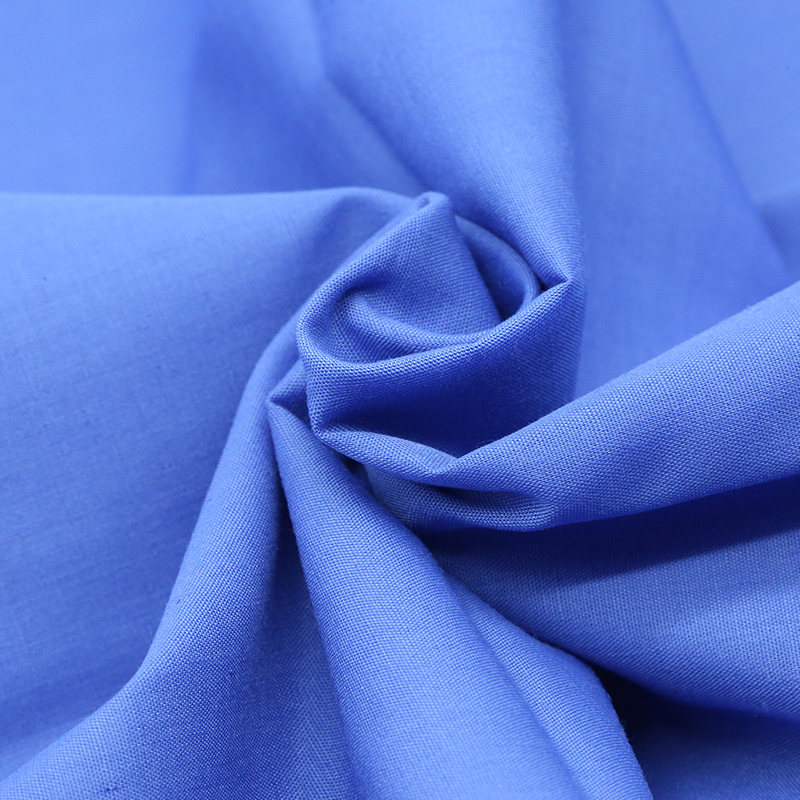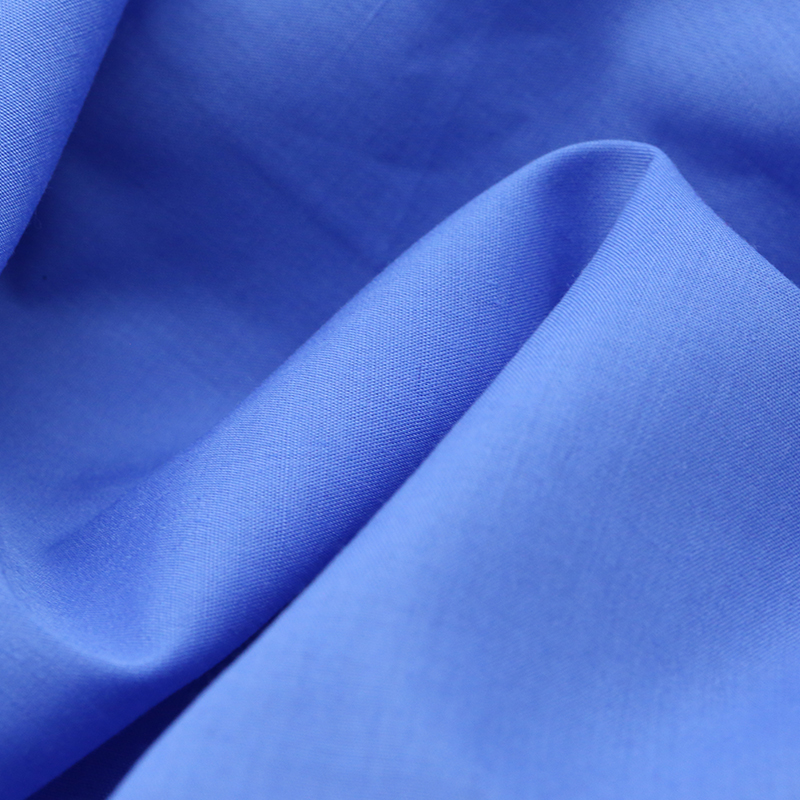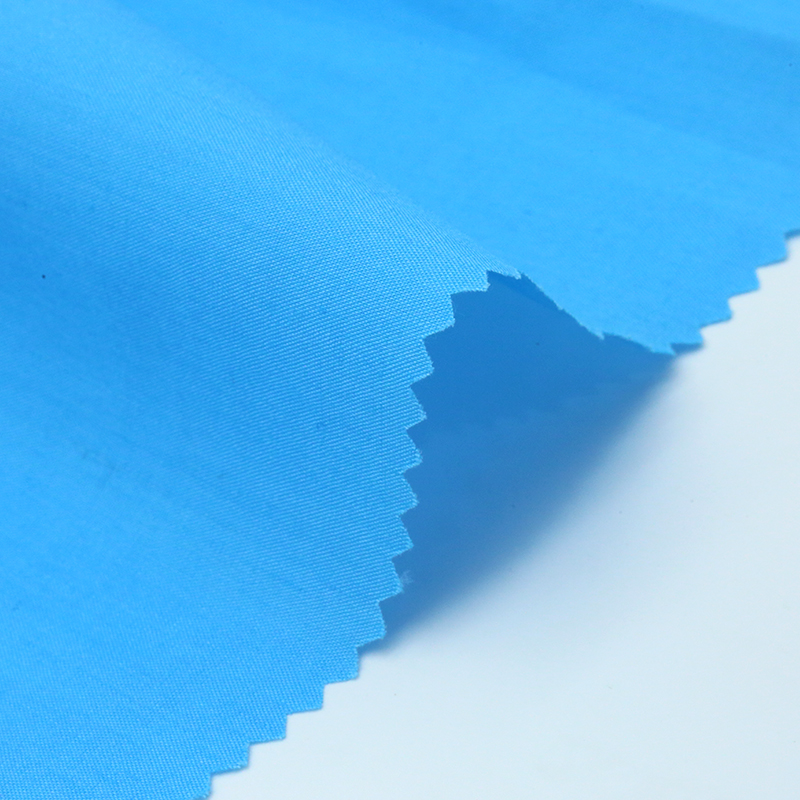Medical Non Woven Fabric & Materials: Quality Solutions
The Pivotal Role of Medical Non Woven Materials in Healthcare Innovation
The healthcare sector's relentless pursuit of enhanced safety, efficacy, and cost-efficiency has critically elevated the importance of advanced material science. Among these innovations, medical non woven materials stand out as a cornerstone technology, revolutionizing everything from personal protective equipment (PPE) to surgical drapes and wound care dressings. Unlike traditional woven textiles, medical non woven fabrics are engineered structures produced by bonding fibers or filaments together through mechanical, thermal, or chemical means, without the need for intricate weaving or knitting processes. This unique manufacturing methodology imbues them with a range of superior properties, including exceptional barrier protection against pathogens, controlled absorbency, enhanced breathability, and often, an inherent softness that contributes to patient comfort. The versatility of these materials allows for precise tailoring of their characteristics, such as grammage, porosity, fluid repellency, and antimicrobial capabilities, to meet the exacting demands of diverse medical applications. Driven by global health crises, an aging population, and an increasing focus on infection control, the market for medical non woven products is experiencing robust growth, necessitating deeper insights into their technological intricacies, application benefits, and strategic procurement. Understanding the core principles behind these materials is essential for healthcare providers, manufacturers, and procurement specialists looking to optimize supply chains and improve patient outcomes.
Advanced Manufacturing Processes for Medical Non Woven Fabrics
The production of medical non woven materials involves sophisticated processes designed to impart specific functional attributes crucial for medical environments. One predominant method is spunbonding, where molten polymers are extruded into continuous filaments, which are then randomly laid onto a conveyor belt to form a web, subsequently bonded by heat or pressure. This technique typically yields materials with high tensile strength and excellent barrier properties, making them ideal for surgical gowns and drapes. Another critical process is meltblowing, which produces extremely fine fibers, often within the sub-micron range, through high-velocity air. These fine fibers create a dense, highly efficient filter medium, indispensable for face masks (such as N95 respirators) due to their superior filtration efficiency against airborne particles and microbes. For applications requiring increased absorbency or cushioning, needle-punching is employed, where fibers are mechanically entangled using barbed needles, creating a durable and porous medical non woven fabric. Hydroentanglement (spunlacing) uses high-pressure water jets to entangle fibers, resulting in a soft, cloth-like material often used in wipes and wound dressings. Each process is meticulously controlled to ensure adherence to stringent industry standards like ISO 13485 (Medical Devices Quality Management System) and various ASTM or AAMI standards, ensuring biocompatibility, sterility, and performance. For instance, the ISO 22610 standard specifies requirements for resistance to wet bacterial penetration, a critical parameter for surgical drapes and gowns made from medical non woven. The selection of raw materials, primarily polypropylene (PP), polyethylene (PE), polyester (PET), and sometimes biodegradable polymers like PLA, plays a significant role in the final product's characteristics, including its breathability, fluid resistance, and durability.

Technical Specifications and Performance Parameters of Medical Non Woven Materials
The efficacy and safety of medical non woven products are defined by a comprehensive set of technical specifications and performance parameters. These parameters are meticulously tested to ensure compliance with global regulatory requirements and functional expectations within demanding healthcare environments. Key specifications include basis weight, typically expressed in grams per square meter (GSM), which influences material thickness, barrier properties, and drapeability. Tensile strength and tear resistance are crucial for preventing tearing during use, especially for surgical drapes and gowns under stress. Fluid repellency, measured by hydrostatic pressure resistance (e.g., AATCC 127), indicates the material's ability to resist penetration by liquids, crucial for preventing cross-contamination. Breathability, often quantified by air permeability (e.g., ASTM D737), ensures user comfort and reduces heat stress, particularly important for prolonged wear of PPE. Filtration efficiency for particulate matter and bacteria (e.g., ASTM F2101 for BFE and ASTM F2299 for PFE) is paramount for face masks and air filters. Furthermore, properties such as linting resistance, softness, and biocompatibility (tested per ISO 10993) are vital for patient safety and comfort, minimizing irritation and potential complications. Materials like T/C polyester cotton blend, used in high-performance hospital gowns, combine the durability of polyester with the comfort of cotton, often enhanced with antibacterial treatments. These blends represent a sophisticated approach to medical non woven fabric design, offering a balanced profile of protection, comfort, and reusability where applicable, contrasting with single-use counterparts.
| Parameter | Typical Range for Medical Use | Relevant Standard | Significance in Application |
|---|---|---|---|
| Basis Weight (GSM) | 15 - 80 gsm (for gowns, masks, drapes) | ASTM D3776 | Influences drape, barrier, and breathability; higher GSM often means better barrier. |
| Bacterial Filtration Efficiency (BFE) | ≥ 95% for masks; ≥ 99% for high-risk barriers | ASTM F2101 | Critical for preventing bacterial transmission in masks and barrier fabrics. |
| Particulate Filtration Efficiency (PFE) | ≥ 95% (0.1 micron particles) | ASTM F2299 | Measures filtration efficiency against non-viable particles for respiratory protection. |
| Hydrostatic Pressure Resistance | ≥ 20 cm (gowns, drapes) | AATCC 127, ISO 811 | Indicates fluid barrier capability, preventing liquid penetration. |
| Tensile Strength (MD/CD) | 15 - 100 N/5cm (varies by application) | ASTM D5034 | Resistance to tearing under tension, important for durability during use. |
| Air Permeability | 50 - 500 L/m²/s (depends on barrier needs) | ASTM D737 | Measures breathability, crucial for comfort during extended wear. |
| Biocompatibility | Non-cytotoxic, non-sensitizing, non-irritating | ISO 10993 Series | Ensures the material is safe for human contact and does not cause adverse biological reactions. |
Diverse Applications and Essential Use Cases of Medical Non Woven
The adaptability of medical non woven materials translates into their widespread application across various segments of the healthcare industry, each leveraging specific material properties for optimal performance. In personal protective equipment (PPE), medical non woven fabric forms the core of surgical masks, respirators, gowns, caps, and shoe covers, providing crucial barrier protection against infectious agents while maintaining breathability and comfort for healthcare professionals. Surgical drapes and wraps, often made from highly fluid-resistant medical non woven, create sterile fields during operations, preventing contamination of surgical sites. For wound care, sophisticated non-woven dressings, including absorbent pads, transparent films, and hydrocolloid dressings, promote healing, manage exudate, and protect wounds from external contaminants. The flexibility of medical non woven allows for specialized applications such as ostomy bags, colostomy bags, and other medical device components where soft, comfortable, yet durable and fluid-resistant materials are required. Furthermore, the role of medical textile materials extends to hospital bedding, pillowcases, and upholstery fabric, offering enhanced hygiene and disposability, reducing the risk of hospital-acquired infections (HAIs). In a practical scenario, consider a hospital utilizing medical non woven surgical gowns: these gowns must withstand fluid penetration, resist tearing during complex surgical procedures, and be comfortable for hours. The selection of a T/C polyester cotton blend with an antibacterial finish, for instance, offers a multi-functional solution that meets these rigorous demands, providing both physical barrier and microbial resistance.

Strategic Advantages and Evolving Industry Trends in Medical Non Woven
The proliferation of medical non woven materials is underpinned by several strategic advantages that significantly benefit the healthcare sector. Primarily, their disposable nature, for many applications, drastically reduces the risk of cross-contamination and the associated costs of laundering and sterilizing reusable textiles, leading to improved infection control protocols. This disposability also contributes to operational efficiency in high-volume medical settings. Furthermore, medical non woven fabrics can be engineered with specific performance characteristics, such as enhanced fluid repellency, anti-static properties, and antimicrobial treatments, which are difficult or costly to achieve with traditional woven fabrics. The consistent quality and performance across batches, facilitated by automated manufacturing processes, ensure reliability in critical applications. Current industry trends are pushing the boundaries of medical non woven innovation. There is a growing emphasis on sustainability, with increasing research into biodegradable and compostable polymers, as well as the development of materials from recycled sources, addressing environmental concerns associated with single-use products. Smart textiles, incorporating sensors or drug delivery mechanisms, are another emerging area, promising advanced wound care and remote patient monitoring solutions. Moreover, the demand for high-performance medical pattern fabric for aesthetically pleasing yet functional uniforms and specialized medical webbing for patient restraints and device components highlights the ongoing diversification. Manufacturers are also exploring advanced finishing treatments to enhance properties like softness, stretch, and haptics, ensuring both functional superiority and user comfort for next-generation medical textile materials.

Customization and Manufacturer Considerations for Medical Non Woven Solutions
For B2B buyers in the healthcare and medical device sectors, partnering with the right medical non woven manufacturer is paramount for ensuring both product performance and supply chain reliability. Customization capabilities are a critical differentiator, allowing buyers to specify parameters such as basis weight, specific barrier levels, anti-static properties, color, and specialized finishes like antibacterial or hydrophilic treatments. This bespoke approach ensures that the medical non woven material precisely matches the unique requirements of a particular application, whether it's for sterile packaging, a highly absorbent medical wicking fabric, or a durable medical upholstery fabric for examination tables. When evaluating manufacturers, key considerations include their adherence to international quality standards such as ISO 9001 and ISO 13485, which signify robust quality management systems. Certifications like FDA registration for specific medical devices further validate their compliance with regulatory requirements. A manufacturer's research and development capabilities, evidenced by their ability to innovate and offer advanced solutions like specialized felt needling kit components or novel composite structures, demonstrate long-term partnership potential. It is also crucial to assess their production capacity, lead times, and global supply chain resilience, especially in times of unforeseen demand spikes. A reputable supplier will offer transparent technical data sheets, provide samples for thorough testing, and engage in collaborative development to optimize material performance. For instance, a client seeking fabric for reusable surgical scrubs would look for a manufacturer offering T/C polyester cotton blend with durable antibacterial properties, a comfortable hand-feel, and consistent colorfastness after repeated industrial laundering.
Ensuring Quality, Trustworthiness, and Support in Medical Non Woven Procurement
Establishing trust in the procurement of medical non woven materials is critical, given their direct impact on patient safety and clinical outcomes. Reputable manufacturers emphasize rigorous quality assurance protocols throughout their production lifecycle, from raw material inspection to final product testing. This includes comprehensive testing for properties such as bacterial filtration efficiency, fluid resistance, tensile strength, and biocompatibility, often performed in accredited third-party laboratories to ensure objectivity. Traceability systems are typically in place to track batches from fiber to finished product, enabling swift identification and recall if any issue arises, although such occurrences are exceedingly rare with top-tier suppliers. Delivery cycle management is another facet of trustworthiness, with clear communication regarding lead times, production schedules, and logistical capabilities. Strategic partnerships often involve dedicated account managers who understand the nuances of the medical textile market and can provide real-time updates and proactive solutions. Furthermore, a robust warranty commitment and comprehensive customer support, including technical assistance for product integration and troubleshooting, reinforce buyer confidence. For instance, a typical quality assurance commitment might include a guarantee against manufacturing defects for a specified period and technical support lines available during business hours to address any application-related queries. This holistic approach to quality, transparency, and support distinguishes reliable partners in the medical non woven supply chain, fostering long-term relationships built on mutual trust and shared commitment to healthcare excellence.
Frequently Asked Questions (FAQ) About Medical Non Woven Fabrics
Q1: What distinguishes medical non woven from general-purpose non-woven fabrics?
Medical non woven fabrics are specifically engineered and tested to meet stringent regulatory and performance standards for healthcare applications. Unlike general-purpose non-wovens, they often possess enhanced barrier properties against fluids and pathogens, high filtration efficiency, excellent breathability, and are frequently treated for antimicrobial resistance. They must also meet strict biocompatibility standards (e.g., ISO 10993) to ensure they are non-toxic and non-irritating when in contact with human skin or bodily fluids. Manufacturing processes for medical grades are typically more controlled and adhere to medical device quality management systems like ISO 13485, ensuring consistency and reliability essential for critical applications such as surgical gowns, masks, and wound dressings. The choice of raw materials and finishing treatments is also meticulously selected to ensure patient safety and product efficacy in a clinical setting.
Q2: What is the typical lifespan and reusability of medical non woven products?
The lifespan and reusability of medical non woven products vary significantly depending on their intended application and material composition. Many medical non-wovens, such as those used in disposable surgical masks, drapes, and certain types of gowns, are designed for single-use to maximize infection control and minimize cross-contamination risks. These products are intended for immediate disposal after a single patient encounter or procedure. However, a growing segment of medical non woven textiles, like certain T/C polyester cotton blend fabrics used for hospital gowns and uniforms, are engineered for durability and reusability. These fabrics undergo specialized treatments (e.g., antibacterial finishes) and are designed to withstand multiple cycles of industrial laundering and sterilization while retaining their protective properties and structural integrity. The exact number of washing cycles they can endure while maintaining performance is specified by the manufacturer and validated through rigorous testing, ensuring that they remain effective and safe for continued use within their designated lifespan.
Q3: How do medical non woven materials contribute to sustainability in healthcare?
While many medical non woven products are single-use, their contribution to sustainability is multifaceted and evolving. Firstly, their disposability significantly reduces water and energy consumption associated with the laundering and sterilization of reusable textiles in healthcare facilities. This can lead to a reduced carbon footprint in certain operational aspects. Secondly, ongoing research and development in the medical non woven industry are heavily focused on creating more environmentally friendly materials. This includes the use of bio-based polymers, biodegradable non-wovens derived from renewable resources, and the incorporation of recycled content into non-critical medical applications. Advanced recycling technologies are also being developed to convert used medical non-wovens back into raw materials. Furthermore, the inherent barrier properties of medical non woven materials contribute to improved infection control, preventing costly and resource-intensive healthcare-associated infections, indirectly contributing to resource conservation within the broader healthcare ecosystem.
References
- Russell, A.D. & Hugo, W.B. (1994). Antimicrobial activity and action of antiseptics and disinfectants. In: Block, S.S. (Ed.), Disinfection, Sterilization, and Preservation (4th ed.). Lea & Febiger.
- Healthcare Infection Control Practices Advisory Committee (HICPAC). (2007). Guideline for Isolation Precautions: Preventing Transmission of Infectious Agents in Healthcare Settings. Centers for Disease Control and Prevention.
- American Association of Textile Chemists and Colorists (AATCC). (Current Standard). Test Method 127: Water Resistance: Hydrostatic Pressure Test. AATCC.
- ISO 13485:2016. Medical devices — Quality management systems — Requirements for regulatory purposes. International Organization for Standardization.
- ASTM F2100-20. Standard Specification for Performance of Materials Used in Medical Face Masks. ASTM International.
-
Hot Sale 180D CEY Crepe AirFlow Woven Fabric 100% PolyesterNewsNov.14,2025
-
Twill TR Fabric for Elastic Suits & Trousers, ShrinkproofNewsNov.14,2025
-
Grey Muslin Fabric — Soft, Durable, Bulk & Custom SizesNewsNov.14,2025
-
CEY Crepe Fabric, Plain Woven Airflow Polyester TextileNewsNov.14,2025
-
Wholesale Custom TR Fabric 80/20 Soft Arabic Thobe FabricNewsNov.14,2025
-
Polyester Cloth - Durable, Wrinkle-Resistant, Factory DirectNewsNov.05,2025
-
TR 80/20 Poly Viscose Twill Thobe & Suiting Fabric Easy-CareNewsNov.05,2025











